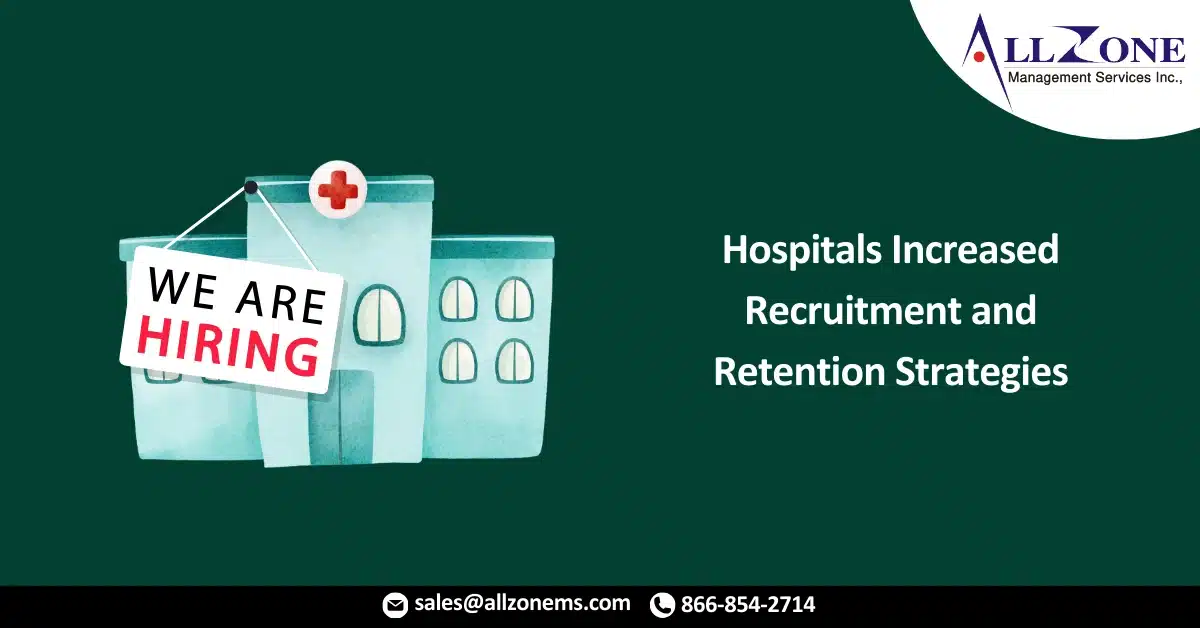Hospitals are ramping up recruitment and retention strategies as they navigate ongoing workforce shortages and rising expenses. A majority of hospital leaders have increased starting salaries and introduced signing bonuses to attract new employees.
The 2022 Healthcare Performance Improvement Report, based on responses from 86 hospital and health system leaders across the U.S., highlights the growing impact of workforce challenges. These issues, exacerbated by the COVID-19 pandemic, have driven up wages across all hospital roles, from clinical staff to administrative and support services.
Recruitment & Retention Strategies
To address staffing shortages, hospitals are implementing various strategies:
-
98% have raised starting salaries or minimum wages.
-
84% introduced signing bonuses.
-
76% expanded remote and hybrid work opportunities.
-
73% offered retention bonuses.
-
58% increased shift differentials for off-hours and weekend coverage.
-
47% expanded overtime pay.
Additionally, 40% of hospitals restructured work schedules to reduce commuting time, and 19% provided subsidies for commuting and childcare.
Managing Rising Workforce Costs
Nearly half (46%) of hospital leaders identified labor costs as a top area for cost reduction. However, rather than immediate cuts, many are focusing on:
-
Reducing reliance on contract labor.
-
Leveraging automation.
-
Adopting new care delivery models.
-
Outsourcing non-clinical operations.
Outsourcing has become a key strategy, with 27% of hospitals outsourcing revenue cycle operations, 23% outsourcing environmental services, and 21% outsourcing IT functions. Despite this, only 16% of health systems reported significant investments in automation, while 46% made modest investments.
Impact on Patient Care & Revenue
Workforce shortages have led to capacity issues, with two-thirds of hospitals operating below full capacity over the past year. Oncology was the only service line that saw volume improvements, while orthopedics, cardiology, and neurosurgery reported declines.
Additionally, 70% of hospitals reported increased inpatient length of stay in 2022, mainly due to delays in discharges to post-acute facilities facing their own staffing shortages. Experts warn that prolonged staffing shortages will continue to strain patient care, increase costs, and negatively impact outcomes.
Additional Financial & Operational Challenges
Beyond workforce issues, hospitals are grappling with:
-
Claim denials rising (67% of hospitals reported an increase).
-
More uninsured or underinsured patients (51% saw a decline in commercially insured patients).
-
Higher bad debt and uncompensated care (41% increase).
-
Ongoing supply chain disruptions, including delays in distribution (71%), product availability issues (58%), and reliance on non-domestic suppliers (50%).
Looking Ahead
Despite occasional revenue increases, hospital margins have remained negative throughout 2022. Industry experts predict continued financial instability, emphasizing the need for hospitals to focus on long-term retention strategies and reducing dependency on contract labor to build a more sustainable workforce.

